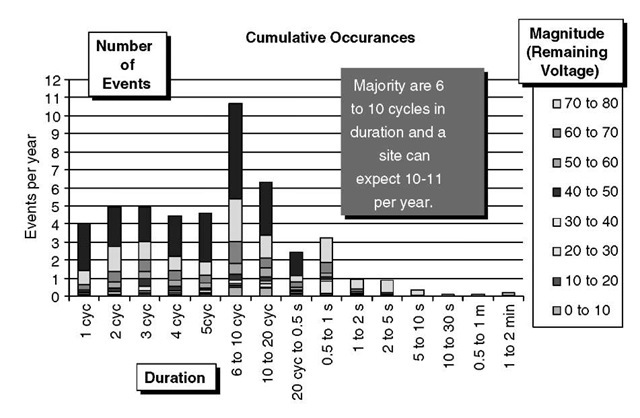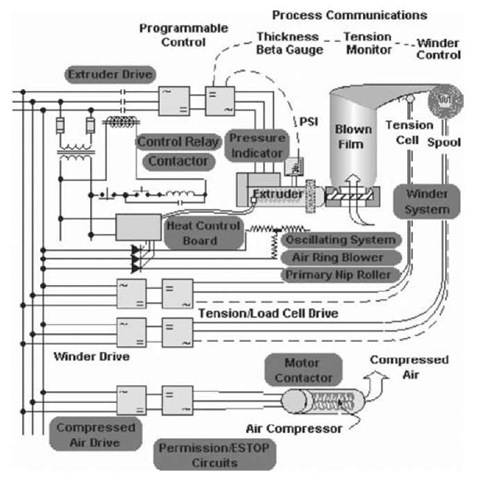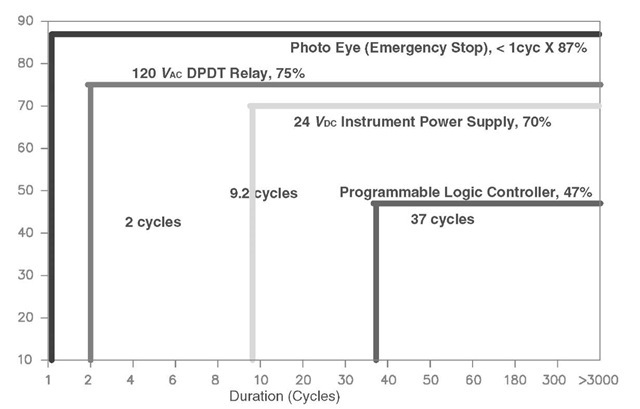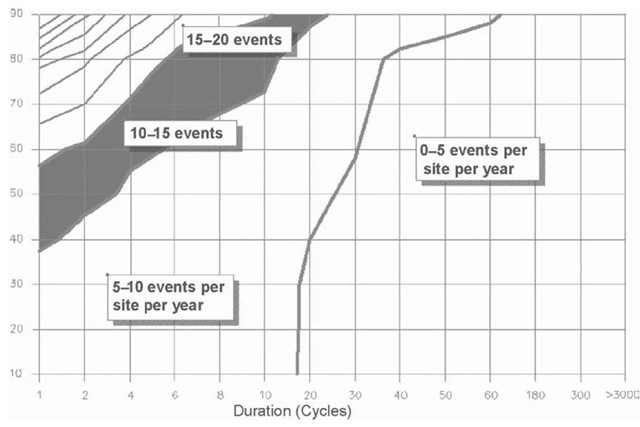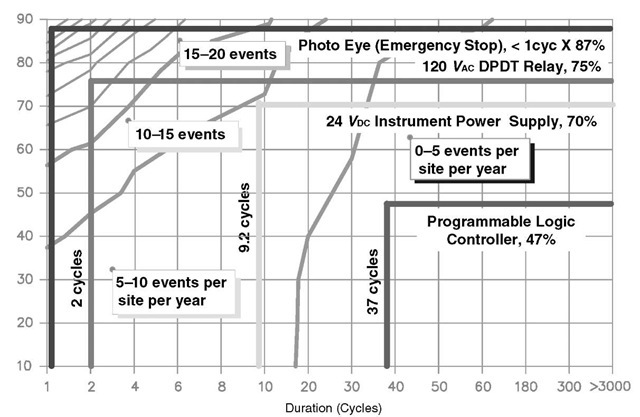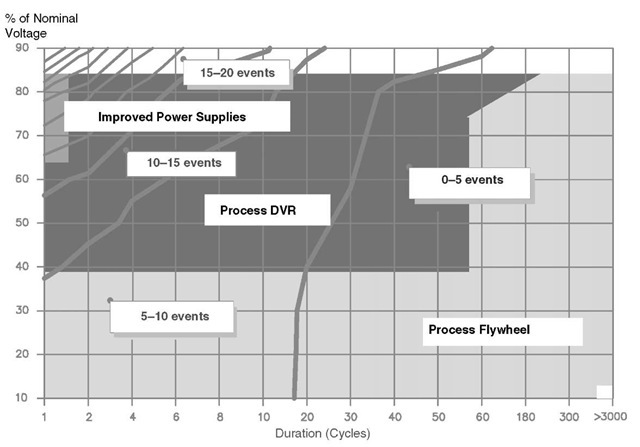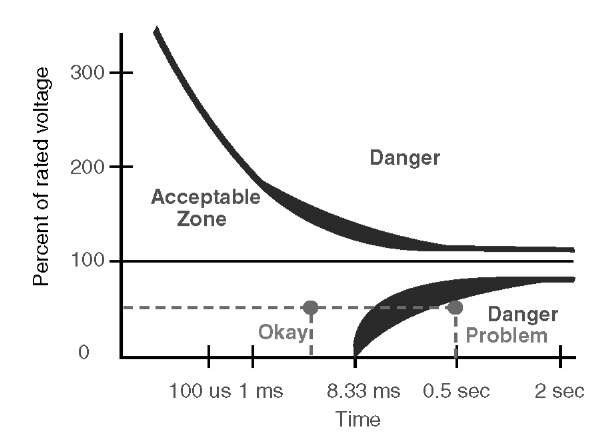Abstract
This paper explores the role of the utility and the industrial or commercial facility engineer in developing a business partnership especially as it relates to the quality of electric power. The industrial or commercial facility engineer needs a thorough knowledge of the electrical power quality needs of equipment and processes critical to the business’s financial success. Information relating to the operation of the electric utility system is essential to understanding what the utility can reasonably deliver and determining the best solution for bridging any gaps between process requirements and available power quality. The utility needs a thorough understanding of the equipment and processes of businesses they serve as well as a thorough knowledge of the power quality requirements of that equipment. Also, the utility should have available the best options for each process to resolve any gaps between the quality of power supplied and that required by the process. The utility has an obligation to its business partners to explain the operations of the utility system and to make available solutions to power quality problems or needs. Some utilities now offer to install power quality monitors, diagnose power quality problems, perform wiring and grounding assessments, and procure and install mitigation equipment within commercial and industrial facilities. When an opportunity arises for the facility engineer and the utility power quality engineer to work together to prevent or resolve a power quality issue, each should be prepared with the knowledge, information and resolve to do so.
INTRODUCTION
It is imperative for utilities and their customers to form a partnership in order for both to optimize their businesses. Electricity and productivity in industry are inherently linked. For a utility to remain profitable, it must have productive customers, and for a customer to be productive, he or she must have reliable, high quality power. Partnership implies trust. The utility must trust customers and disclose the reliability and quality of power on the electrical system, and the customers must trust the utility and inform the utility engineers regarding their processes. Working together both can meet their business objectives.
SHARING INFORMATION WITH CUSTOMERS ABOUT THE UTILITY SYSTEM
Before the utility can share information regarding typical system performance, the utility must first monitor and analyze the system. In an effort to characterize the utility distribution system, Duke Power and other electric utilities funded a study to determine what quality of service a distribution served customer might expect. This study called Distribution Power Quality (DPQ) was conducted by Electric Power Research Institute (EPRI) and focused on voltage sags, transients, and harmonics. The results for voltage sags are presented in Fig. 1. This information is extremely valuable to customers when specifying new equipment or selecting the optimum power quality mitigation devices. For example, the data indicates that the great majority of voltage sags are 6-10 cycles in duration and from 60% to 90% remaining voltage. A customer can use this information when ordering new equipment by requesting equipment that can ride through these voltage sags. If the equipment manufacturer does not have the capability to test the ability of the new equipment to ride through voltage sags, the utility can do so. Or, if mitigation equipment is needed, this information is valuable when choosing which mitigation equipment to apply.
UNDERSTANDING CUSTOMER PROCESSES
A utility gains valuable information by analyzing its system, but that is only part of the information needed to make businesses more productive. A detailed understanding of customer processes and what causes these processes to unexpectedly shutdown is also needed. Voltage sags are a common cause of process interruptions for many industrial customers. Voltage sags cause equipment and therefore, entire processes to shut down, impacting productivity as well as product quality. In an effort to resolve many of the problems caused by voltage sags, utilities provided funding to EPRI to perform an extensive testing of processes prone to shutdowns and to determine effective solutions. The information is in a web-based tool called the Industrial Design Guide (IDG).
Fig. 1 Voltage sag data from the distribution power quality (DPQ) study.
EPRI and the participating utilities prioritized industries for study each year. To date, plastics and polymers processing, metals fabrication, semiconductor fabrication, pharmaceuticals, printing and publishing, and healthcare and hospitals have been addressed. The plastics and polymers processing industry was first completed. Processes within this industry were identified early and included pipe extrusion, plastic jacket extrusion, thermo-forming, blown film—bubble, and injection molding. Each of these processes was tested in order to find the weak links within the process. One objective was to identify the most economical and effective power quality solutions and to do so required, identifying what components within the process caused the process to shut down. A process diagram of blown film is shown in Fig. 2. The equipment shown in dark gray is possible weak links and can be viewed in even more detail within the IDG.
A tool that enables component level testing was developed several years ago. This tool is connected to and powers the process being tested. The process is then subjected to controlled voltage sags of different magnitudes and durations, originating at various points on the voltage sinewave while the response of process components is being monitored. The result is detailed information about the ride through capabilities of various components during voltage sags. A sample of the results from such a test is shown in Fig. 3. This figure shows that for a sag to 87% nominal voltage for one cycle or longer, the photo eye, the most sensitive component in the process, will drop out causing the process to shut down. The next most sensitive component in this example is the double-pole, double-throw, DPDT, relay. A voltage sag to 75% of nominal voltage lasting two cycles or longer will cause this relay to dropout.
Once the process is characterized to the component level, solutions for each of the components can be identified as well as the cost effectiveness of each solution. With this information, the customer can make an informed business decision about the acceptable number of shutdowns per year and the cost he or she is willing to pay to achieve this level of ride-through.
Fig. 2 Diagram of blown film process and possible weak links.
Fig. 3 Process component sensitivity.
Fig. 4 shows contour lines generated from the DPQ Study. For example, a distribution served customer with equipment sensitive to voltage sags in the highlighted area can reasonably expect between 10 and 15 process interruptions a year.
Fig. 5 overlays the process component sensitivity found from sag testing with the distribution system characterization curves from the DPQ Study. By examining the contour lines that the equipment sensitivity plot is within, a customer can predict how often a particular component will result in process shutdowns each year. If the power supply were the weakest link in the process, a distribution served customer could expect between five and ten process interruptions a year. Unfortunately, the DPDT relay and the photo eye would cause far more disruptions.
Fig. 4 DPQ study distribution system characterization curves.
Fig. 5 Compatibility.
Power Quality solutions can be applied at the facility level to protect the entire facility, at the process level to protect a process, at the equipment to protect the piece of equipment, or at the component level for example to hold in a relay or contactor. In general, power quality solutions applied at the facility level are the most expensive while solutions applied at the component level are the least expensive. There are situations however when each is appropriate. For example, if the cost of a process interruption is minimal, then perhaps improving the power supplies would be all that could be economically justified. However, if the cost of a process interruption is substantial, then a process DVR, dynamic voltage restorer, or perhaps even a flywheel would be the right business decision. Armed with this information and the cost of each solution, the customer can select and justify the appropriate level of voltage sag ride-through (Fig. 6).
TRACKING CUSTOMER REQUESTS
Each year customers contact their utility for help, resolving reliability or power quality problems. If the customer and the utility already have a good working relationship, the utilities are usually the first contacted. Sometimes the customer first contacts the equipment manufacturer and then at the recommendation of the manufacturer, contacts the utility. Unless there is an obvious problem with the equipment, the utility usually receives a call. This gives the utility the unique advantage of knowing what problems a particular business or industry is consistently experiencing. With this information, the utility can track and trend the data to determine what problems should be studied to find effective and economical solutions.
One tool used by utilities is the PQ Database. This database was developed by EPRI for utilities to use to store and sort power quality inquiry data. When a customer contacts a utility to request assistance with a power related problem, the description of the problem is entered into the database. As the information about the problem is gathered, it too goes into the database. Monitoring data is often collected and saved, and the actual resolution to the inquiry is also stored. This data can then be sorted in a variety of ways. Samples from a few such sorts are shown. Tables 1-3 illustrate such data collected by Duke Power’s PQ engineers from 1997 to 2000.
Table 1 shows equipment affected by power quality events. Table 2 shows the responses of the equipment to the power quality events, and Table 3 shows the causes of the power quality events.
Once the data is collected and sorted, it quickly becomes obvious which equipment is experiencing the most problems and what problems are most often encountered. Many utilities contribute to a collaborative effort, to research ways to better solve common power quality problems. Often solutions exist, and it is just a matter of identifying the most appropriate solution and where the solution would best be applied. Sometimes existing solutions are not appropriate and a new solution is developed, applied, and tested. This effort requires collaboration between utilities, a research and development team, customers, and equipment manufacturers.
Fig. 6 Selecting a solution.
Table 1 Affected equipment from duke power PQ database
| Affected equipment | Count | Percent |
| Plant equipment—in general | 317 | 14.2 |
| AC drive | 204 | 9.2 |
| Process controls | 152 | 6.8 |
| Motor | 140 | 6.3 |
| Other-affected equipment | 97 | 4.4 |
| PC | 84 | 3.8 |
| Breaker | 73 | 3.3 |
| LANS-Networks, Mainframes | 62 | 2.8 |
| UPS | 61 | 2.7 |
| Chiller, HVAC | 61 | 2.7 |
DEMONSTRATION PROJECTS
When ideal solutions to existing power quality problems do not exist, new solutions that solve the identified problems can be designed, developed, and tested. One example is the low speed flywheel. This flywheel was specified by EPRI, developed by Active Power, and installed and tested at Shaw Industries, a customer served by Duke Power. This demonstration project required collaboration and cooperation of EPRI, Active Power,
Table 2 Equipment response
| Affected equipment | Count | Percent |
| Equipment/component failure | 501 | 27.5 |
| Drop-out | 334 | 18.3 |
| Erratic operation | 232 | 12.7 |
| General-customer request | 207 | 11.3 |
| Nuisance tripping | 154 | 8.4 |
| Energy usage monitoring | 65 | 3.6 |
| Cycling—on and off | 52 | 2.9 |
| Lights dimming/flickering | 42 | 2.3 |
| PQ characterization | 31 | 1.7 |
| Fuse expulsion | 29 | 1.6 |
Table 3 Problem causes
| Affected equipment | Count | Percent |
| Duke system; fault, operation | 209 | 13.4 |
| Customer equipment | 155 | 9.9 |
| degradation | ||
| No PQ problem | 153 | 9.8 |
| Other—customer system | 148 | 9.5 |
| problems | ||
| Lightning strike | 115 | 7.3 |
| Grounding/bonding | 94 | 6.0 |
| Capacitor switching | 91 | 5.8 |
| Equipment specification | 71 | 4.5 |
| Problem cause no found | 68 | 4.3 |
| No electrical problem | 61 | 3.9 |
Shaw Industries, and Duke Power. The flywheel was applied to a process line that extrudes filaments to produce carpet backing. This facility was served by a distribution circuit and the process shut down frequently due to voltage sags and momentary interruptions.
The key to successful implementation of the flywheel as a power quality solution included:
• Characterizing the electrical system,
• Determining the sensitivity of the process components,
• Matching the solution to the process line power requirements as well as to the utility distribution system relaying schemes,
• Including specific and accurate language in specifying the solution,
• Meticulously diagramming the process,
• Properly installing the solution, and
• Monitoring the results.
Shaw Industries realized both productivity and efficiency gains from the operation of the flywheel.
UTILITY/CUSTOMER FORUMS
Some utilities have customer groups that meet regularly to discuss power quality and reliability issues, as well as utility standards and changes, and customer or industry challenges. This forum offers a unique opportunity for the utility and the customer to find ways to help each other. Many power quality opportunities are discovered this way. Without this interaction, the utility could only guess what their customers needed and customers could only guess how and why utilities implemented policies and changes. One such group, the Power Quality Issues Forum was established at Duke Power in 1992. This group meets quarterly and participates in activities that include: visiting the Clemson University Electrical Engineering Laboratory to see utility funded power quality research and development efforts; attending PQA, a yearly power quality conference hosted by EPRI; traveling to EPRI-PEAC to see equipment and product testing and research; sponsoring power quality training to stay current on industry initiatives; and visiting demonstration sites such as the installation of the flywheel at Shaw Industries.
WORKSHOPS
As information is gained from demonstration projects, IDG work, SagGen testing, equipment testing done by EPRI-PEAC, and research and development conducted by universities and funded by utilities, this information must be shared with utility customers. One effective way of doing so is by holding workshops, conferences, and seminars. Some specific examples include the Industrial Technology Information Exchange conference sponsored by Duke Power yearly, for the past two years. This conference highlights new electric technology applications, power quality and reliability efforts, and innovative ways to reduce energy costs. Based on customer feedback from the first year, the conference was held twice in 2001 in both North and South Carolina and participation increased dramatically. Another successful way to share relevant power quality information is conducting workshops and seminars. Such workshops offered by utilities focus on wiring and grounding for enhanced equipment performance, effectively applying surge suppression, improving process ride-through, selecting effective power quality solutions, improving drive performance, selecting appropriate monitoring equipment for the application, designing effective lightning protection systems, and solving problems with ungrounded electrical systems.
TRACKING COSTS OF PQ PROBLEMS
In order for a customer to make an informed business decision about power quality solutions, it is imperative to know the cost to the business when a power quality problem occurs. This cost should include scrap, unproductive labor, lost productivity, missed orders, risk, and recovery. A process for tracking these costs should be implemented if not already in place.
SPECIFYING NEW EQUIPMENT FOR RIDE-THROUGH
In order to minimize costly power quality solutions, ride-through specifications can be included when purchasing new equipment. Ideally, one would characterize the electrical environment to know exactly what specifications to include, but this is not always feasible. A generic ride-through curve can be included which would allow a process to ride-through most voltage sags. Fig. 7 illustrates the Information Technology Industry Council (ITIC) Curve. This curve was developed to represent the sensitivity of most computer equipment. The region within the two curves represents conditions where computer equipment should operate without disruption or damage. A similar curve has also been developed for the semiconductor industry.
Fig. 7 The Information Technology Industry Council (ITIC) curve.
KEEPING ABREAST OF NEW PQ SOLUTIONS
Utility customers can keep abreast of new power quality solutions in a variety of ways. Power quality magazines have articles describing new solutions. Utilities offer seminars and conferences outlining the features of power quality solutions. Literature from equipment testing is available through EPRI utility members. With the tendency for business and industry to reduce personnel, it is not always practical to stay informed about power quality issues. In which case, one can contact utility power quality experts when power quality problems occur or when specifying new equipment.
EDUCATING UTILITY ON PROCESSES
In order for utilities to help when power quality problems do arise, it is imperative that the utility power quality engineers be familiar with the processes in question. This can only be accomplished if the utility customer experiencing the problem feels comfortable sharing process information with the utility. Much information regarding processes is confidential and proprietary, and the utility must respect that confidentiality. It is much easier to expeditiously solve a power quality concern if the utility power quality engineer already has a good understanding of the process equipment. This requires resources and commitment from the utility management. Power quality expertise takes years to acquire technology, equipment, and power quality solutions are constantly changing, requiring time and effort to remain informed.
CONCLUSION
By actively participating in a partnership, both the electric utility and utility customers can significantly improve their business results. This requires collecting and sharing information regarding utility system operation, studying and sharing process requirements—including sensitivity to electrical disturbances, and evaluating solutions to power quality problems.
Information can be effectively shared through customer forums, conferences, and workshops. A utility, customer partnership requires commitment from all involved, but the benefits are well worth the effort.
